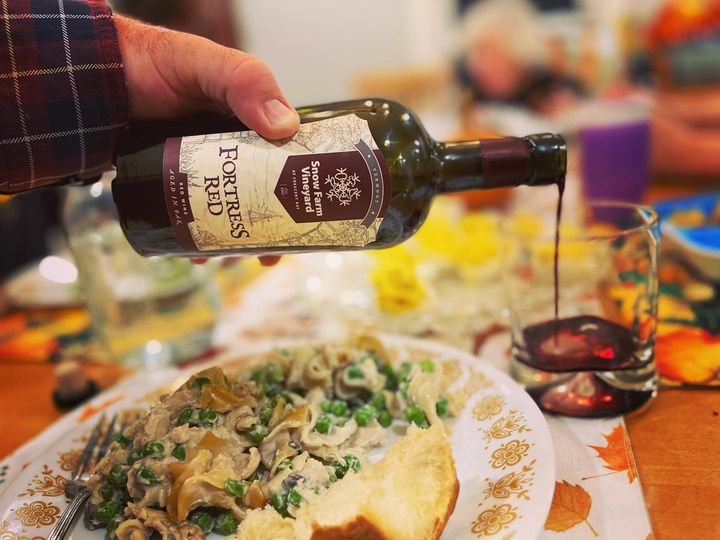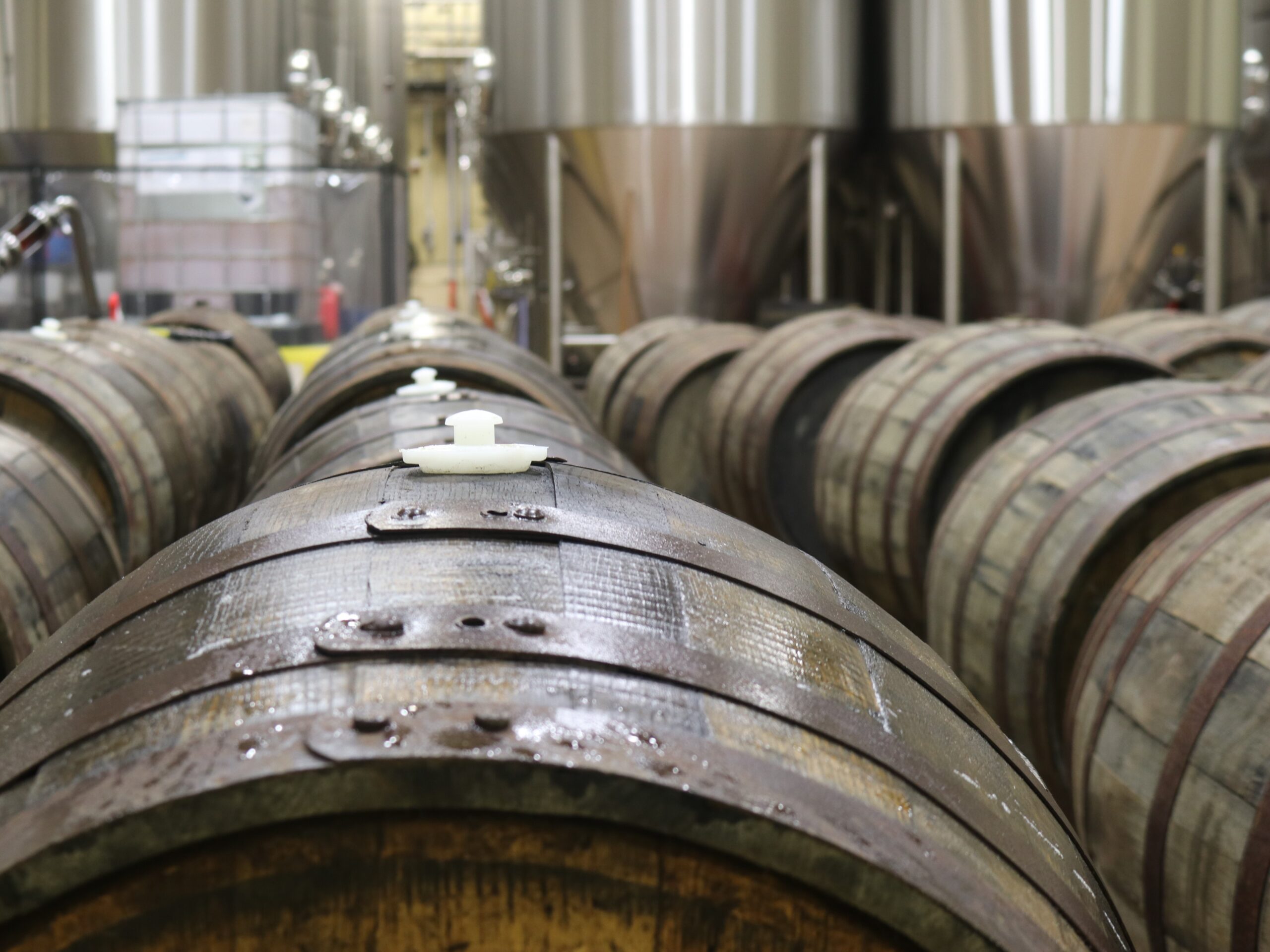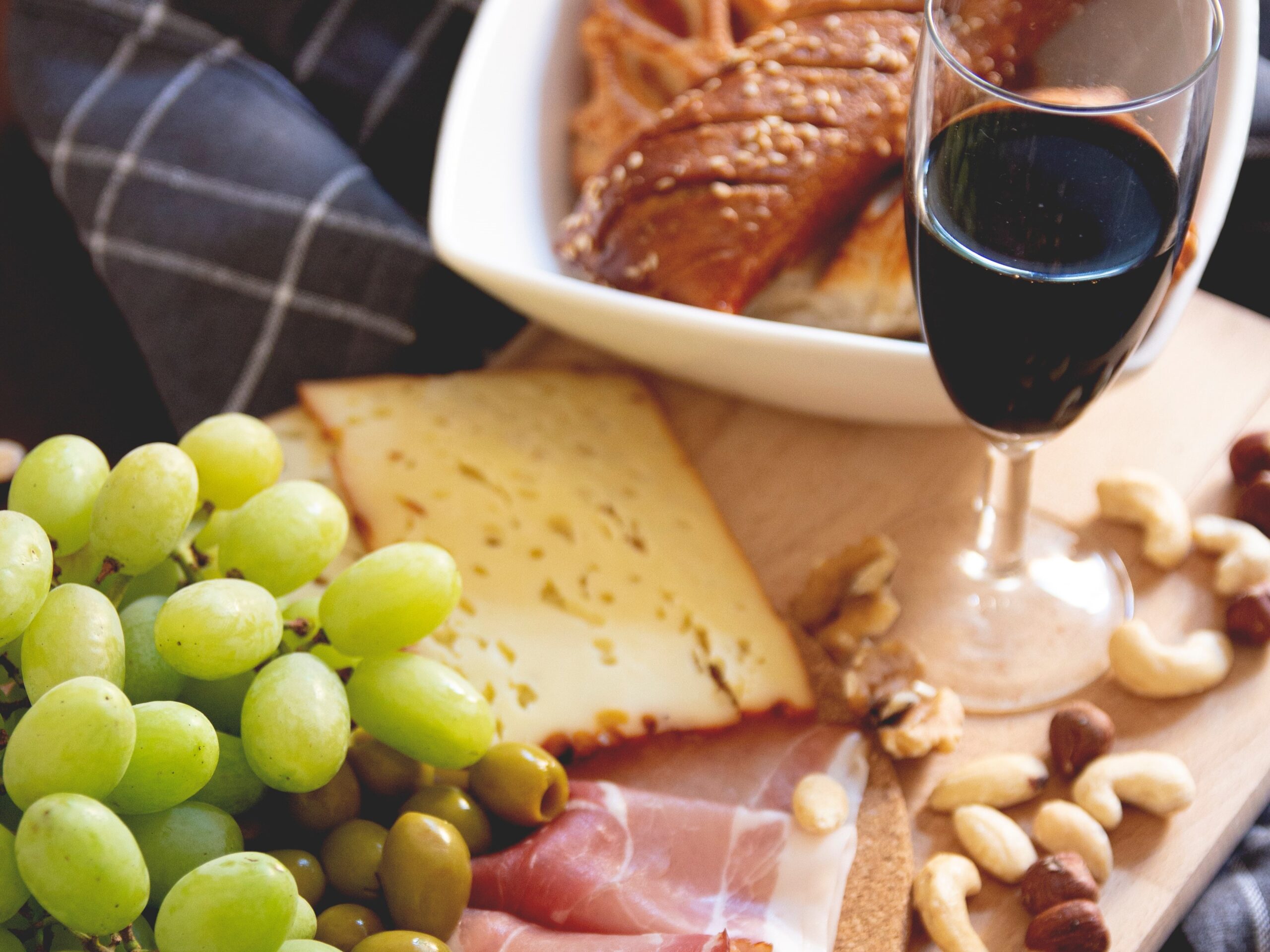You’ve likely seen Port on a menu or enjoyed it at the end of a meal, but what is Port exactly, and where does it come from?
Port wine is a type of fortified wine that originated in Portugal. Port is unique because distilled grape spirit, typically brandy, is added to the wine. Port wines are known for their sweetness and are often served as an aperitif or dessert wine.
A wine can only be labeled a Port (or Oporto in Europe) if it is produced in Portugal. The same applies to wines like Champagne, which can only be labeled so if made in the province of Champagne in the northeast of France. That doesn’t mean the same winemaking techniques can’t be done elsewhere, though.
Across the ocean in Northern Vermont, Snow Farm Vineyard created one of the first Vermont-made Port-style wines, called Fortress Red.
“Port-style wines are not true Ports because we’re not in Portugal, but they are made in exactly the same way,” Snow Farm Vineyard head winemaker Patrick Barrelet said. “You are truly getting a taste of Vermont with our Port-style wine. It’s not made with grain alcohol from somewhere else. We use our own grapes for the juice and to make the brandy alcohol as well.”

How Port Wine Is Made
Port wine is made by adding brandy to grape juice during fermentation. This stops the fermentation process prematurely, which leaves residual sugar in the wine. The wine is then aged in oak barrels before being bottled. The barrels help to soften the tannins in the wine and give it its characteristic flavors and aromas.
The alcohol content of Port is higher than the average glass of wine since it is fortified – it is closer to 20% ABV (alcohol by volume) rather than the standard of 12% ABV.
Most Port wines are made from red grapes, but there are also white and rosé Port wines that are made from white grapes.
“A red Port has more complexity and the aromas are a little bit of a wider range and more flavorful,” Barrelet said. “Our Port-style Fortress Red is made with Frontenac grapes, a dark-skinned, hybrid French-American grape variety.”
There are three main types of Port wines: ruby, tawny, and vintage. Ruby Ports are young wines that are typically bottled within two years of harvest and ruby-red in color. Tawny Ports are aged in oak barrels for four to six years before they are bottled. They’re a deeper brick red. Vintage Ports are only produced in exceptional years, and they are aged for at least two years in oak barrels before being released. Today, Vintage Port is considered to be one of the finest types of Port available.

“The tawny Port has oxidation happening so the flavors are changing, and you’re not just getting fruity flavors anymore. You start getting earthy tones and notes of ripe, woody, leathery aromas, called tertiary aromas,” Barrelet said. “Our most recent Port-style wine is in between a ruby and tawny Port. The best of both worlds.”
Because it takes years to age a tawny Port, Barrelet says he’s planning for their next Port-style wine release to be a younger ruby Port. In future years, he’ll experiment with different cold-hardy Vermont grapes.
“I won’t limit myself. I may make some with Léon Millot grapes and will certainly try different styles of Ports,” Barrelet said. “The extra-ripe Frontenac grapes in our first batch created a dryer Port-style wine with ripe, prune flavors and hints of licorice without being overly sweet. Our next batch is aging now, and we’ll taste it soon to see the difference in the ruby Port-style wine.”
The History of Port Wine
Portugal has been making Port wine since the 17th century, primarily in the Douro Valley.
The Douro River runs through Valley and the name “Port” is derived from the city of Porto, which sits at the river’s mouth. The river was the primary way Port was transported to England at the time. To protect the wine from the long journey, it was fortified with brandy.
Port became very popular in England during the 18th century because it was less expensive than French wines. In the early 1700s, English wine drinkers were unable to access French wine due to turmoil with France. As a result, Port became even more popular in England as it was one of the few types of wine that were still available.
Then, in the 1860s and 70s, pests wiped out nearly all the Port vineyards. This created high-priced and low-quality Ports. Winemakers adopted new procedures of pest control in the 1890s and regrafted their vines onto Phylloxera-resistant rootstock to resurrect the Port industry. Unfortunately, many Port producers never fully recovered.
The biggest change for Port was when it was first shipped via land, instead of by river, in 1964. The 20th century saw new styles of Port, including a rosé style Port and a cocktail mixer Port. It became fashionable to drink Port with dessert after dinner parties.
Today, Port is benefiting from a revival in demand, largely thanks to millennials and their desire to experiment with drinks they see as new, like Port. In recent years, bartenders have explored how Port wine can enhance both new and traditional cocktails, resulting in the popularity of Port-based cocktails.

Try Snow Farm Vineyard’s Port-Style Wine
Whether you’re new to Port wines or you’re a longstanding fan, Snow Farm Vineyard’s Fortress Red port-style wine is a delicious example of this classic dessert wine. Made from native hybrid grapes grown in Vermont’s Champlain Islands, Fortress Red has all the classic flavors you expect from a Port wine but with its own unique twist with aromas of licorice, fig, and ripe red fruit. Flavors of prune, chocolate, coffee, and oak shine through with a semi-sweet finish.
If you’re looking for a special treat to pair with a cheese plate or chocolate dessert, look no further than Fortress Red! It’s best served in dessert wine glasses.
“For me, I like it before dinner; when you invite guests over, have a glass of Port with some cheese. Or you can have it after a nice meal.”
Barrelet chuckled as he said, “There are many ways to enjoy it and every way is good!”



